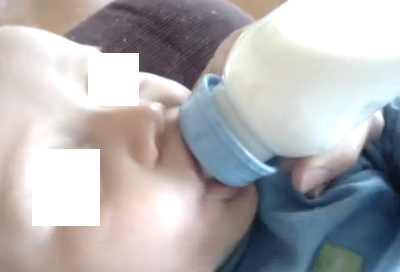Lactose is a type of sugar occurring in milk and dairy items. The enzyme lactase breaks down this sugar into glucose and galactose. The enzyme is secreted by the walls of the small intestine, and is vital to proper digestion of sugar lactose.
Lactose intolerance is a condition characterized by an inability in people to digest lactose. It usually arises due to deficient levels of the lactase enzyme. It may also be noted that lactose intolerance in babies is often confused with lactose overload and/or allergy to milk proteins or cow’s milk.
An allergy to the proteins occurring in cow’s milk is really an immune response against a single or multitude of proteins present in the milk, while intake of large quantities of milk can lead to lactose overdose. Even though the human body makes sufficient amounts of the lactase enzyme, intake of elevated levels of milk can occasionally result in some lactose present in the additional amounts of milk to remain undigested, which later undergoes fermentation by the bacteria present in the intestine, eventually leading to bloating and gas.
Symptoms of lactose intolerance in babies
The signs and symptoms of lactose intolerance in babies typically occur in about 30 minutes to 2 hours or more, after the intake of milk or other dairy items that have lactose. A few commonly occurring signs and symptoms are listed below:
- Abdominal bloating and gas
- Pain in the abdominal area
- Cramps in the abdomen
- Diarrhea
- Twitching the body and crying after the intake of milk or milk products
- Nausea, and occasional vomiting
The symptoms of lactose intolerance in babies is generally mild, although on occasions it can also be severe.
Causes of lactose intolerance in babies
Lactose intolerance is babies is usually caused due to deficient production of the lactase enzyme. Deficiency of lactase enzyme can be of two types, i.e. primary or secondary.
As a rule the secretion of lactase enzyme reduces with an increase in the child’s age. This is because milk is the primary source of nutrition in babies, thereby requiring additional amounts of lactase for lactose digestion purposes. It is only later on that children branch out into different food groups, leading to a subsequent decrease in lactase production. This process is known as primary lactase deficiency.
Secondary lactase deficiency can arise due to varied causes such as damage or injury to the small intestine or the gut.The underlying presence of different conditions such as gastroenteritis, diarrhea, parasitic infections, Crohn’s disease, and celiac disease can increase the vulnerability to development of secondary lactase deficiency, and eventually lactose intolerance in babies.The process of lactose digestion can also be adversely affected by iron deficiency.
It may also be noted that some babies have lactose intolerance from birth. It is referred to as congenital lactose intolerance and is said to be an inherited disorder that runs across different generations. Babies with congenital lactose intolerance do not have the ability to digest even their mother’s breast milk.
Diagnosis
Lactose intolerance in babies is not that easy to detect, because the accompanying gastrointestinal symptoms such as nausea, diarrhea, bloating, and gas can also be caused by other types of health disorders.Lactose intolerance in babies is usually diagnosed via the three main tests, i.e. the hydrogen breath test, lactose intolerance test, and stool acidity test.
- The hydrogen breath test: In this, the breath of affected babies is examined for hydrogen content after intake of a lactose-rich beverage. Improper digestion of lactose causes it to get fermented by the intestinal bacteria. This causes the release of large quantities of hydrogen which passes out from the body during exhalation.
- The lactose intolerance test: In this diagnostic procedure, affected babies are given a beverage loaded with lactose. Two hours after ingestion, doctors take out a blood sample and verify the blood-glucose levels. If the intestines are functioning properly, then it will secrete sufficient amounts of lactase enzyme which will then break down lactose into glucose, thereby increasing the serum-glucose levels. In case there is no increase in the levels of blood-glucose after the intake of a lactose-rich drink, then it can be taken as a sign of incomplete digestion of lactose.
- The stool acidity test: This test is used to measure the levels of acidity in stool. Improper digestion of lactose causes the stool acidity levels to rise. All lactose that remains undigested undergoes fermentation, leading to release of lactic acid and other kinds of fatty acids, eventually causing an increase in the stool acidity levels.
Treatment of lactose intolerance in babies
- Currently, there are no known ways to cure lactose intolerance in babies, or to improve the production of lactase enzyme.
- Lactose intolerance in babies can adversely affect the growth and development of the child. It is a difficult condition to diagnose, as its symptoms mimic those elicited by other gastrointestinal conditions. It is therefore vital for parents to be on the lookout for abnormal signs and go for immediate diagnosis whenever it is noticed.
- Treatment includes use of a lactose-free baby formula and avoiding all lactose containing products.
- It is best to consult a doctor for a diet program so that the baby gets sufficient nutrition.


